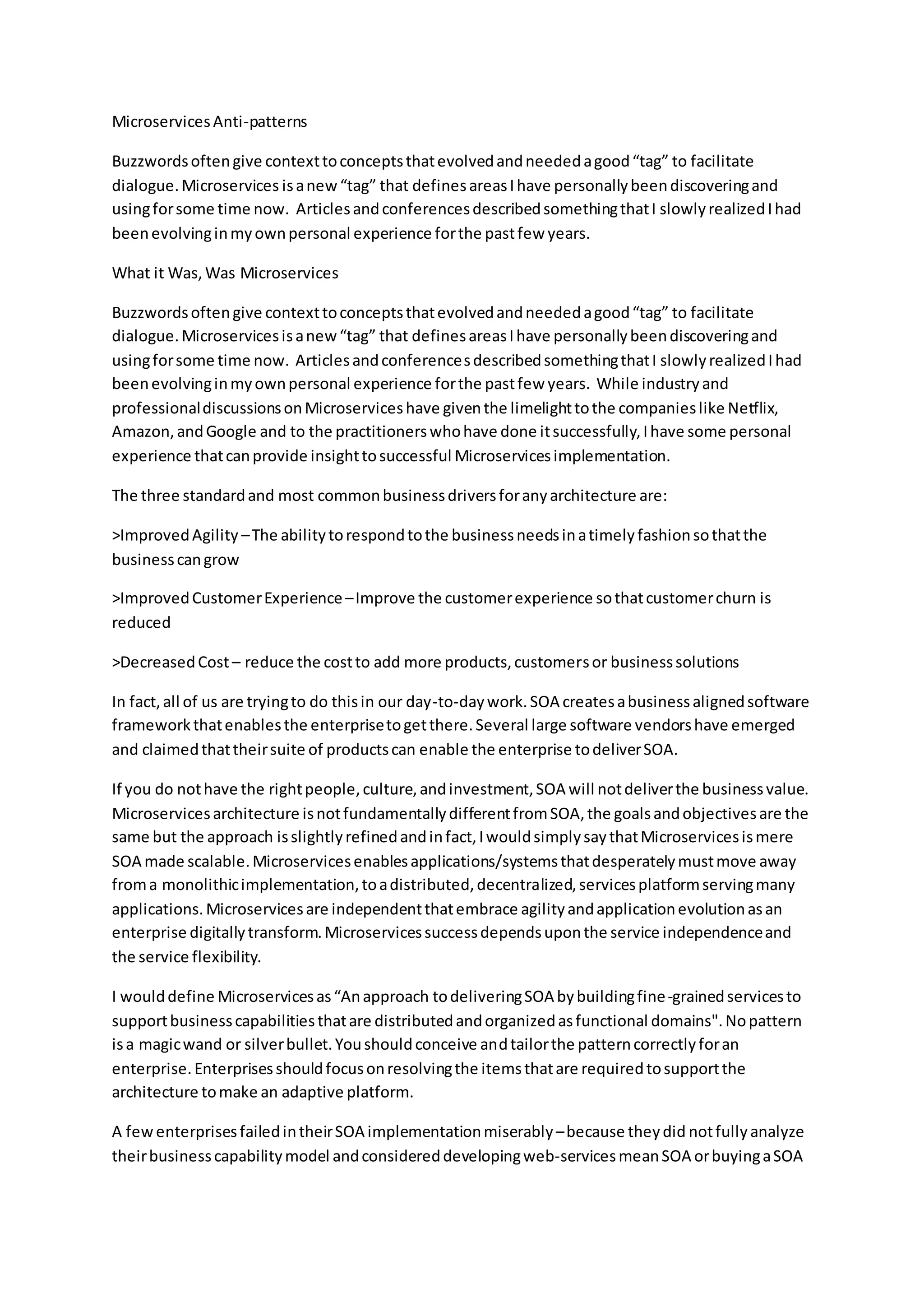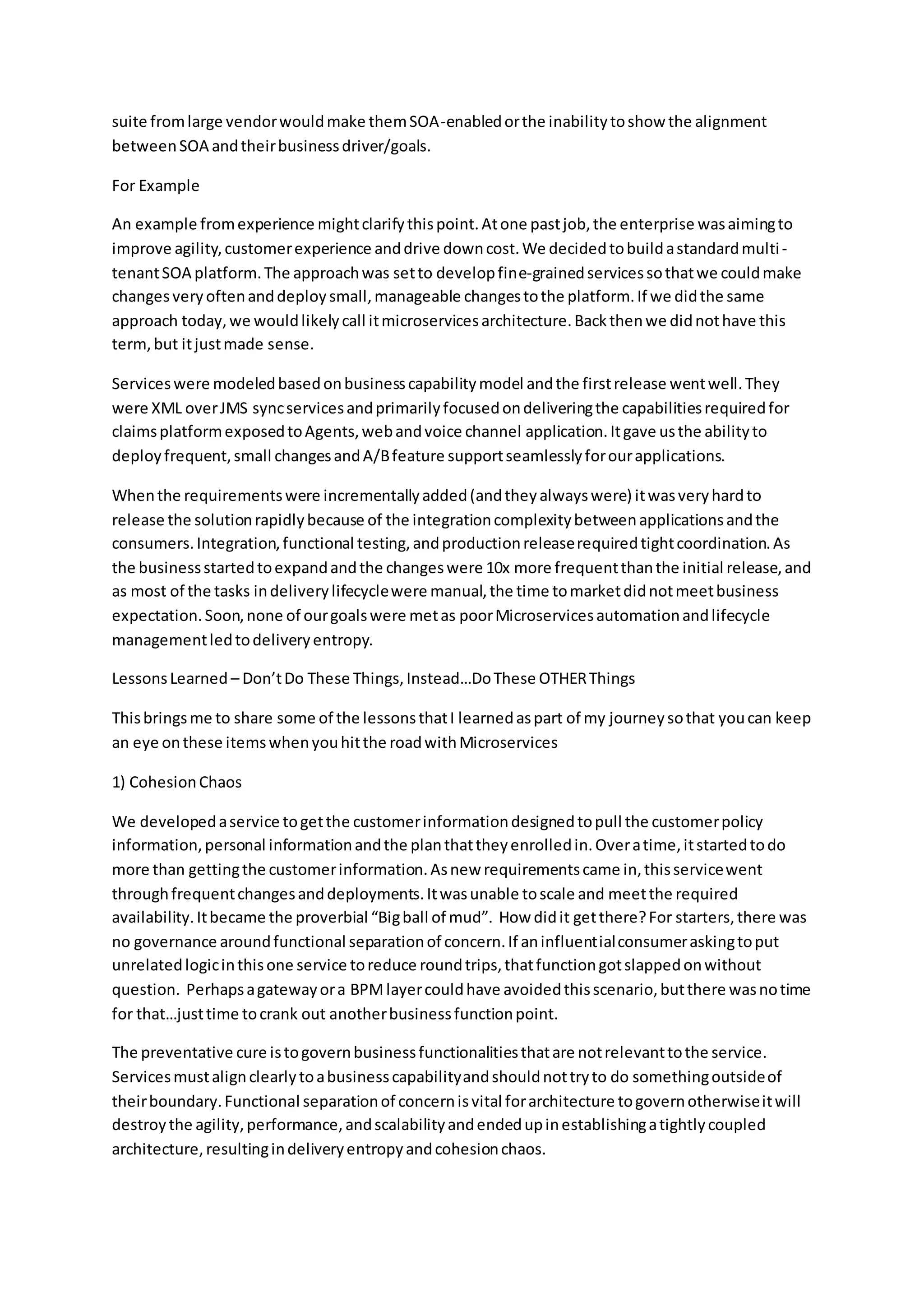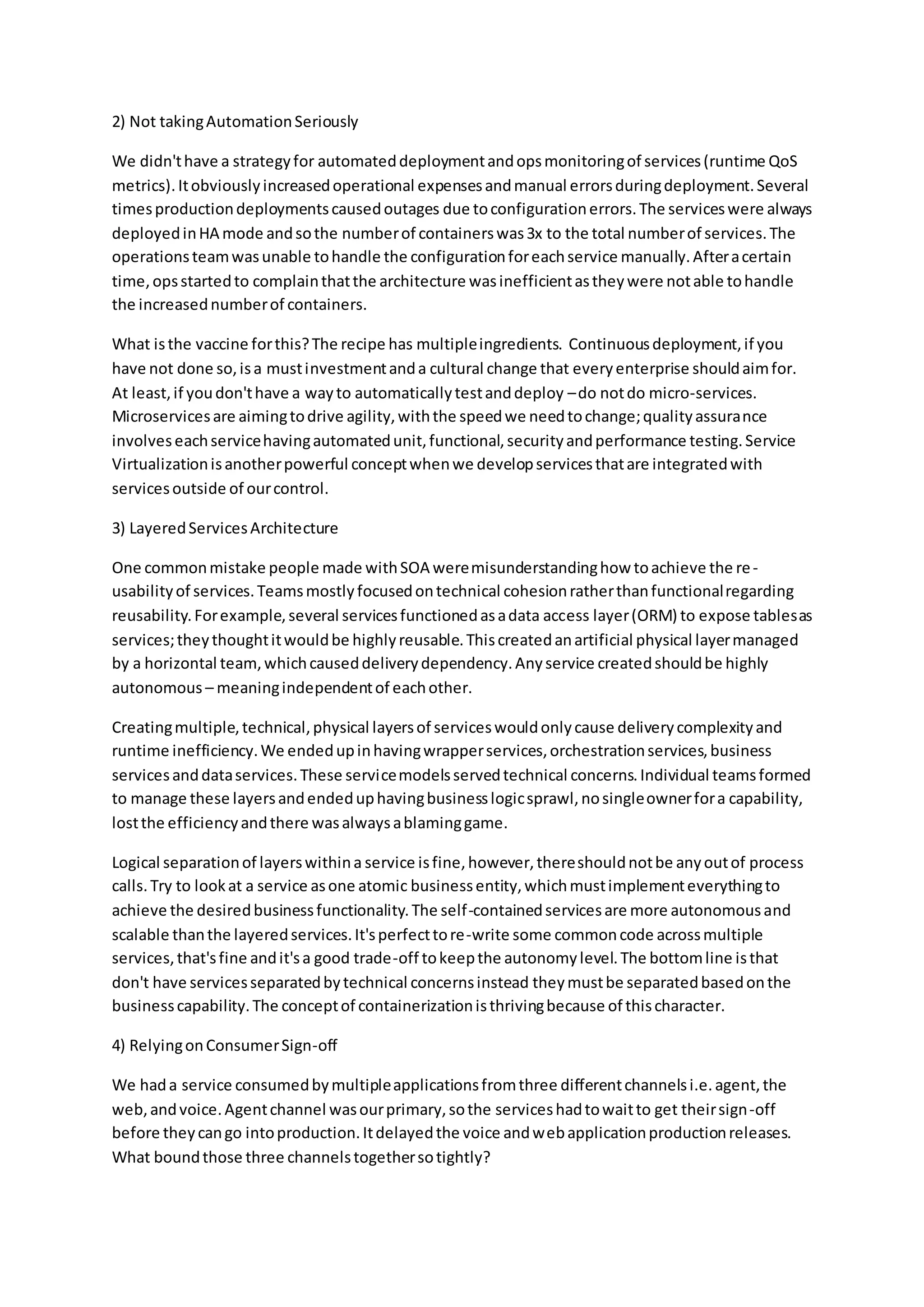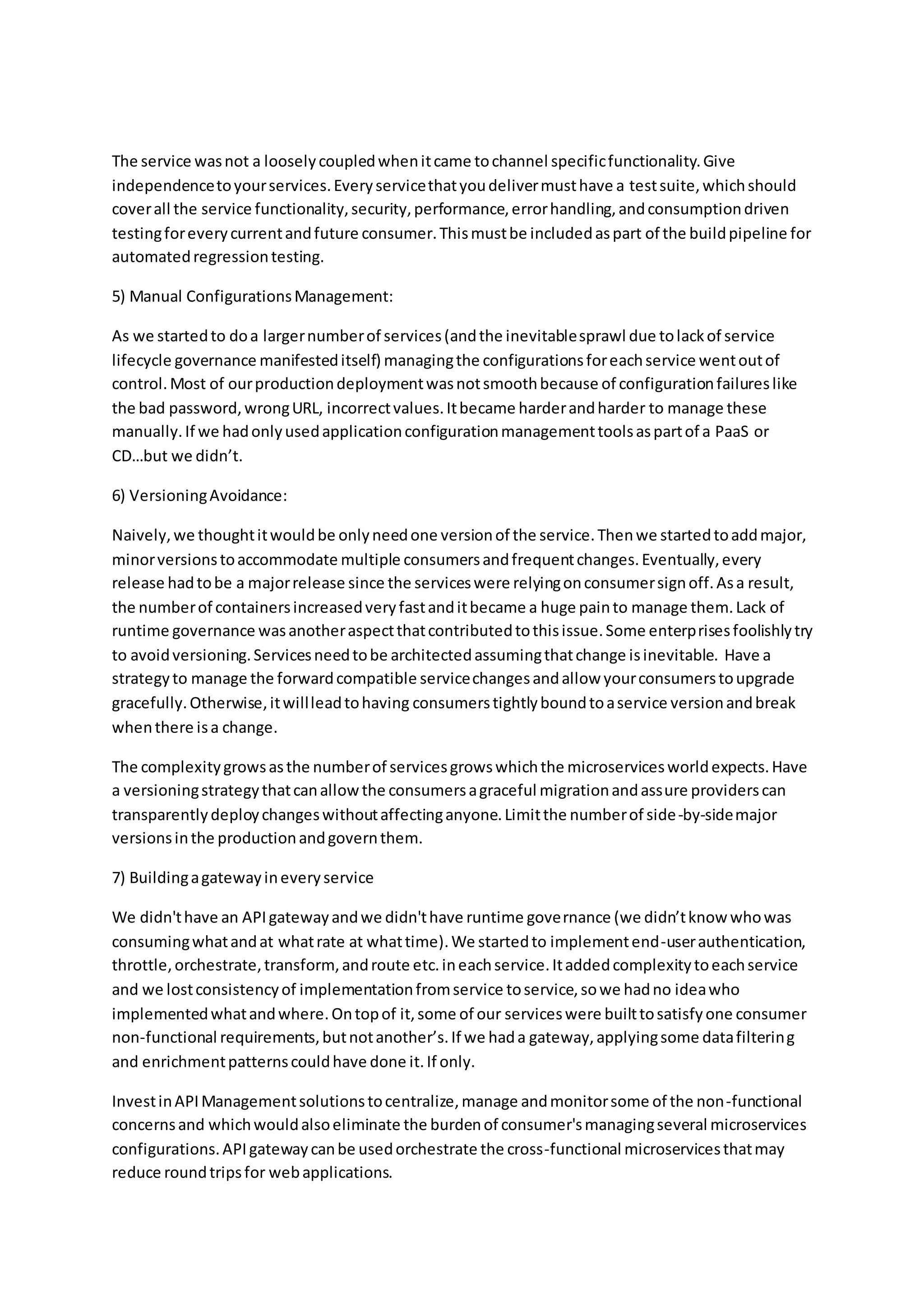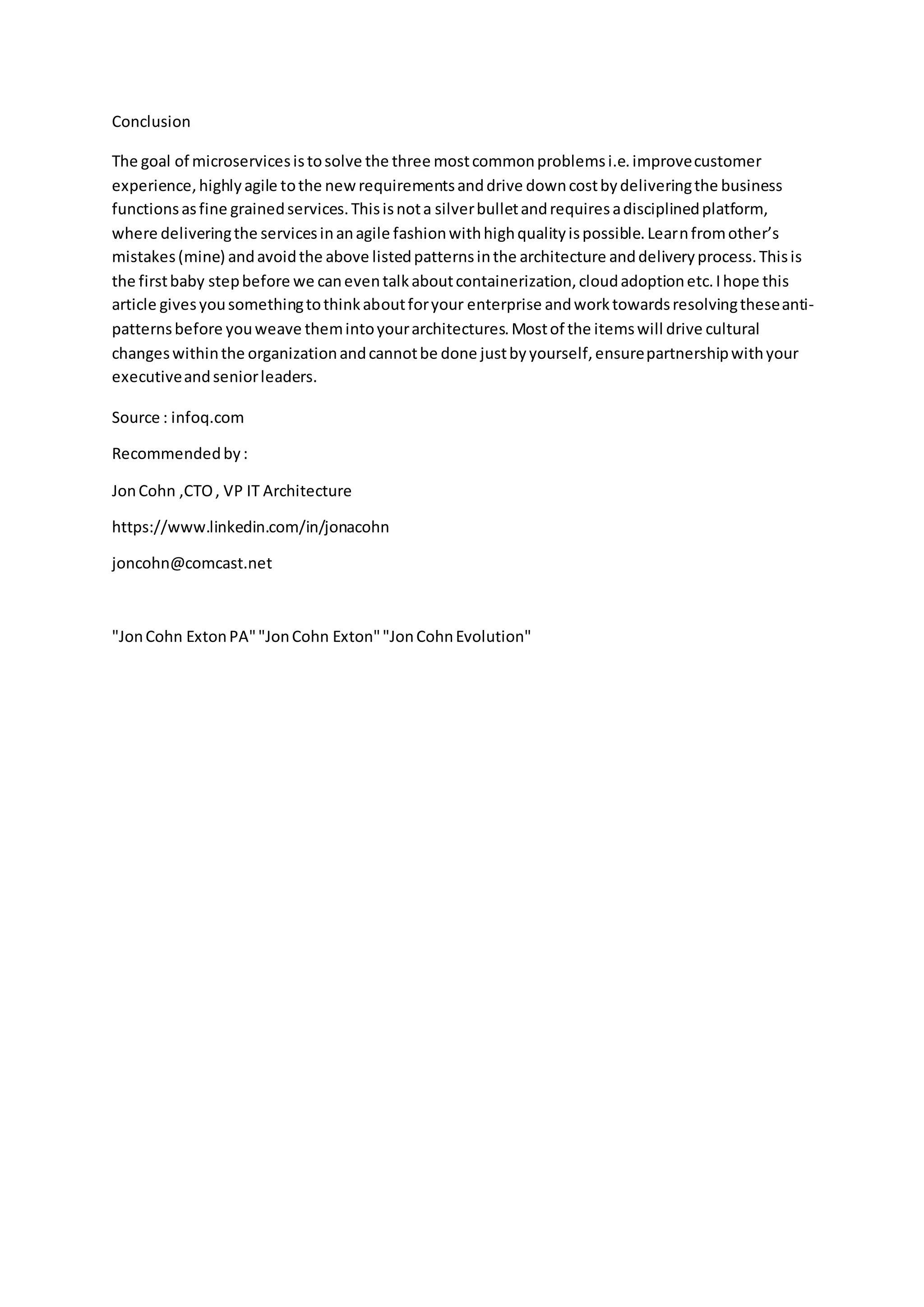The document discusses the evolution and implementation of microservices as a scalable approach to service-oriented architecture (SOA). It emphasizes key business drivers such as improved agility, customer experience, and cost reduction, while sharing lessons learned from past SOA failures to guide successful microservices adoption. The author highlights the importance of governance, automation, and achieving service independence to avoid common pitfalls associated with microservices architecture.
